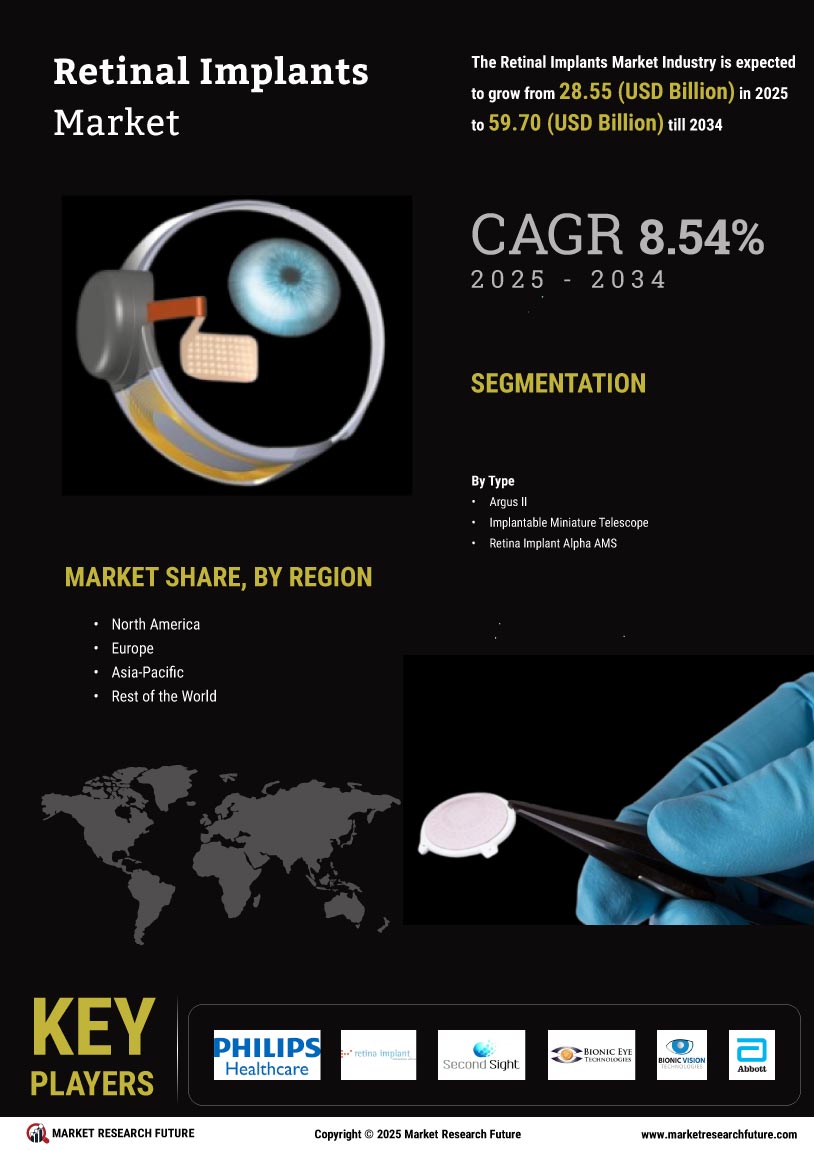Market Growth Projections
The Global Retinal Implants Market Industry is projected to experience substantial growth over the next decade. With a market valuation of 26.3 USD Billion in 2024, it is anticipated to reach 64.8 USD Billion by 2035, reflecting a compound annual growth rate of 8.54% from 2025 to 2035. This growth trajectory suggests a robust demand for retinal implants driven by technological advancements, increasing prevalence of retinal disorders, and supportive government policies. The market's expansion is likely to attract investments and foster innovation, further enhancing the availability and effectiveness of retinal implant solutions.
Government Initiatives and Funding
Government initiatives aimed at enhancing healthcare infrastructure and funding for research in retinal disorders are crucial for the Global Retinal Implants Market Industry. Various countries are increasing their investments in healthcare technologies, which includes funding for retinal implant research and development. This support not only accelerates innovation but also ensures that effective treatments become accessible to a broader patient base. As a result, the market is projected to grow, with estimates indicating a rise to 64.8 USD Billion by 2035. Such initiatives are likely to create a conducive environment for the Global Retinal Implants Market Industry to flourish.
Growing Awareness and Patient Advocacy
The rise in awareness regarding retinal health and the role of retinal implants is significantly influencing the Global Retinal Implants Market Industry. Patient advocacy groups are increasingly educating the public about retinal disorders and available treatment options, leading to higher demand for retinal implants. This heightened awareness is likely to result in more patients seeking treatment, thereby driving market growth. As the Global Retinal Implants Market Industry evolves, the emphasis on patient education and advocacy will play a pivotal role in shaping future trends and adoption rates.
Rising Prevalence of Retinal Disorders
The increasing incidence of retinal disorders, such as age-related macular degeneration and diabetic retinopathy, is a primary driver for the Global Retinal Implants Market Industry. As populations age, the prevalence of these conditions is expected to rise significantly. For instance, it is estimated that by 2024, the market will reach a valuation of 26.3 USD Billion, reflecting the urgent need for innovative solutions. This growing patient population necessitates advanced treatment options, thereby propelling the demand for retinal implants. The Global Retinal Implants Market Industry is likely to expand as healthcare systems adapt to these rising challenges.
Technological Advancements in Implant Design
Technological innovations in retinal implant design are transforming the Global Retinal Implants Market Industry. Recent advancements, such as improved biocompatibility and enhanced visual acuity, are making these devices more effective and appealing to patients. For example, the development of wireless and miniaturized implants has shown promise in clinical trials, suggesting a potential shift in patient outcomes. As these technologies evolve, they may lead to increased adoption rates among healthcare providers and patients alike. The Global Retinal Implants Market Industry stands to benefit from these advancements, which could drive market growth significantly in the coming years.
Aging Population and Increased Healthcare Spending
The aging global population is a critical factor driving the Global Retinal Implants Market Industry. As individuals age, the likelihood of developing retinal disorders increases, leading to a higher demand for effective treatment options. Additionally, increased healthcare spending in many regions is facilitating access to advanced medical technologies, including retinal implants. This trend is expected to contribute to a compound annual growth rate of 8.54% from 2025 to 2035, indicating robust growth potential for the market. The Global Retinal Implants Market Industry is poised to capitalize on these demographic shifts, ensuring that innovative solutions are available to those in need.











